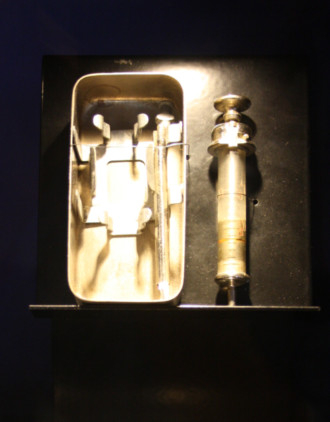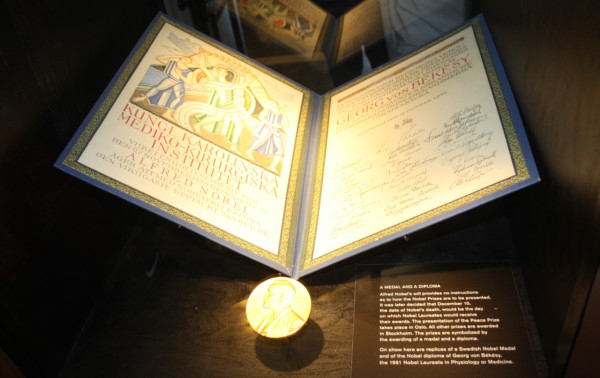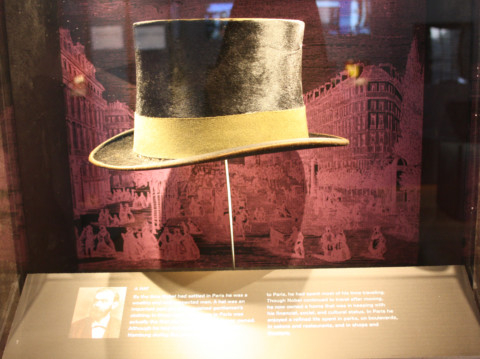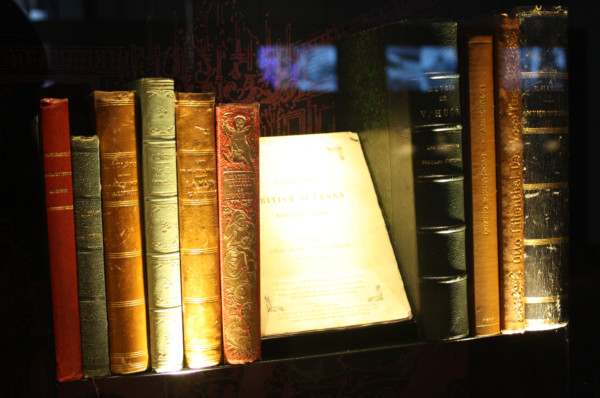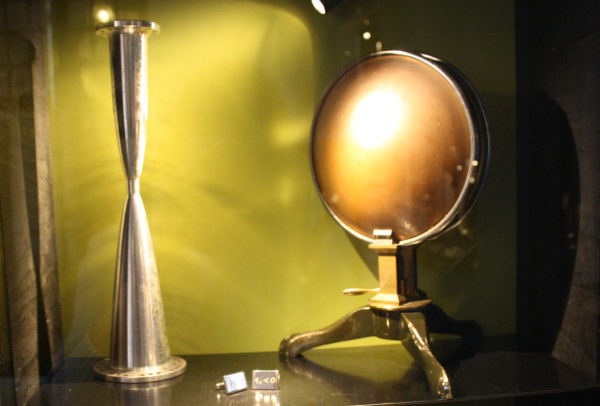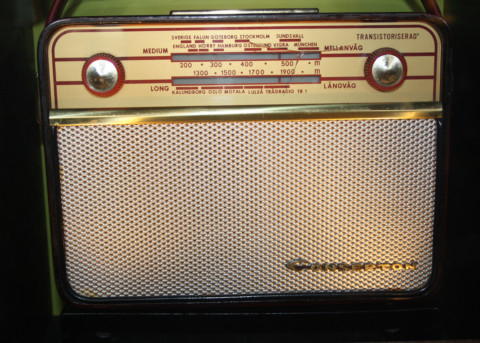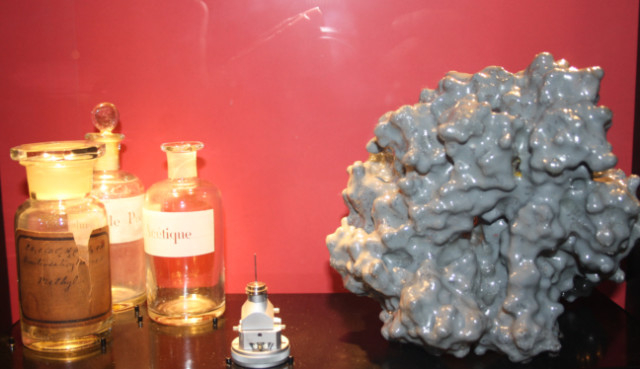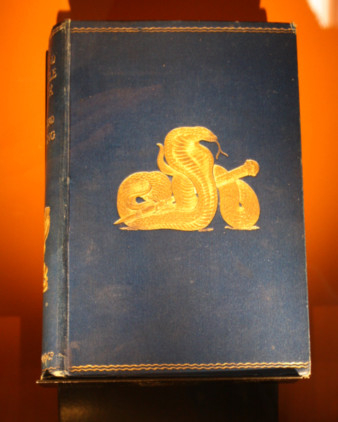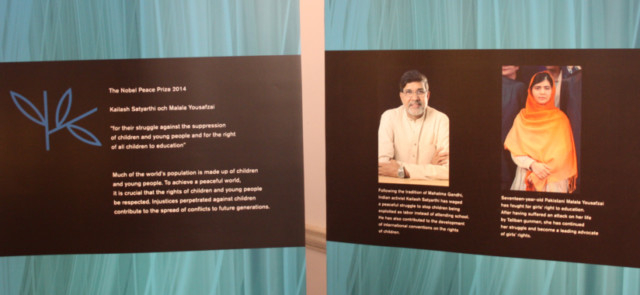
Even as the ceremony was held on December 10 in Oslo, Norway, to felicitate 2014 Nobel laureate Kailash Satyarthi for his mission to safeguard children’s rights, for the first time in India, an exhibition “The Nobel Prize — Ideas Changing The World” has been on at The Nehru Memorial Museum & Library, Teen Murti Bhawan, in New Delhi.
The travelling show, earlier held in Brazil and Sweden is part of a number of events taking place in Bangalore, Mumbai and Pune.
Among the activities are seminars and university lectures and roundtable discussions with Nobel laureates Finn Kydland (Economic Sciences, 2004) and George Smoot (Physics, 2006).
Says Satish Kumar, an exhibition official, “Many things we encounter in our everyday lives are connected to the Nobel Prize. These could be discoveries, inventions or works of literature that have earned their creators a Nobel Prize. In most cases, though, the connection is more complex or indirect.”
Artefacts on display
The exhibition includes artefacts of 12 different laureates and how Nobel Prize awarded efforts have shaped and continue to change the world.
A large part is devoted to Swedish innovator and philanthropist Alfred Nobel, who penned his will in 1895, laying the foundation for the world’s most famous award, the Nobel Prize.
He decreed that revenue earned from his fortune should be used for prizes within five fields: physics, chemistry, medicine, literature and peace.
Since Nobel’s will provided no instructions on how the Nobel Prizes were to be presented, it was later decided that December 10, the date of Nobel’s death, would be the day on which Nobel laureates would receive their awards.
While the presentation of the Peace Prize takes place in Oslo, all other prizes are awarded in Stockholm. The prizes are symbolised by the awarding of a medal and a diploma.
While the first Nobel Prizes were awarded in 1901, the Sveriges Riksbank Prize in Economic Sciences in Memory of Alfred Nobel was first presented in 1969.
The exhibition, dealing in five different themes provides an insight into: The Nobel Prize and its areas, Alfred Nobel’s inventions and the background to his will, the history of the Nobel Prize and works of the laureates, the link between Nobel Prize awarded efforts and phenomena in everyday life, and how the awarded discoveries may affect the future.
All this has been assembled with the help of unique objects and documents, original artistic interpretations and advanced exhibition techniques.
Dynamite inventor
Alfred was born in Stockholm, Sweden in 1833 and in later years of his life, settled in Hamburg, Germany and then in Paris, France.
At the time of his death in 1896, he was living in San Remo, Italy. He spent time living in several different countries and engineered a number of revolutionary inventions within the field of explosives, including dynamite. His inventions became important for mining and the construction of railroads, canals and harbours in the growing industrial society of the 19th century.
A frequent traveller, he visited spas to try to improve his health. His suitcase, showcased at the exhibition, was used for keeping cutlery, medicine flasks as well as stationery.
By the time Alfred settled in Paris, he was a wealthy and well-respected man. His house in Paris was the first real home that he ever owned. Although he had maintained a home base in Hamburg during the years prior to his move to Paris, he had spent most of his time travelling.
The home was in keeping with his social, financial and cultural status. And since a hat was an important and distinguished part of a gentleman’s clothing in those days, Alfred too wore one. A hat that was a part of his wardrobe is displayed at the museum.
Penicillin
Although dedicated to the founder of the Nobel Prize and organised by Nobel Museum and Nobel Media, the art show is also about past and present Nobel laureates.
The thought behind the show is to create curiosity and tickle young minds and get them excited and inspired about scientific discoveries.
According to Olov Amelin, director of Stockholm-based Nobel Museum, “There are many stories connected to the artefacts.” His personal favourite is about Alexander Fleming and the discovery of penicillin.
Fleming had chanced upon a fungus that could kill bacteria in the late 1920s, but he put the discovery aside as interesting, but not significant for more than a decade.
It was only when an effective antibiotic was needed during the Second World War that Fleming remembered his accidental discovery and began developing a new drug.
“It changed the way we treat infections in a dramatic way. And in 1945, Fleming was awarded the Nobel Prize together with Ernst Boris Chain and Howard Walter Florey, who followed up his research successfully,” Amelin said.
Electronics
There are also stories to be found in the everyday objects we take for granted. For example, a cellphone was made possible through many Nobel Prize winning discoveries, including plastics, microchip and optical fibre, he said.
In some cases, the selection of Nobel laureates has had more direct connection to historical events and some decisions had a major impact on the public mind. For instance: The armband worn by Red Cross personnel during the First World War. It was Henry Dunant, the first recipient of a Nobel Peace Prize, who founded the Red Cross in 1863.
The exhibits include Rudyard Kipling’s “The Jungle Book”, which was published in 1894. The story was inspired by Kipling’s childhood and travels in India, which at that time was a British colony. Then there’s Frederick Banting and J.J.R. Macleod’s hypodermic needle and packaged insulin. The discovery of insulin in 1921 opened new possibilities in the treatment of diabetes.
Another prominent item is the transistor radio, which won its inventors William Bradford Shockley Jr, John Bardeen and Walter Houser Brattain, the Nobel Prize for Physics in 1956. The transistor was invented in 1948. But during the 1950s it became a component in many electronic devices, which allowed them to be made more compact.
Simon van der Meer invented the magnetic horn in 1984 to focus particle beams. It was used for focusing antiproton beams in an experiment to find the ‘W’ and ‘Z’ particles.
A pair of cufflinks with the equation “q0<0”, meaning that the universe is expanding at an increasing rate — Adam Riess had the cufflinks manufactured for the Nobel Festivities in 2011.
In addition to these interesting pieces, the exhibition brings together some rare artefacts and documents from the Nobel Museum, including a flask and mirror reflector, used in spectroscopy, from Alfred Nobel’s laboratory; a notepad of Peruvian author Mario Vargas Llosa; and a wooden bear from the desk of former Finnish President, Martti Ahtisaari.
On show is a bank note issued in conjunction with the 300th anniversary of Sveriges Riksbank, Sweden’s National Bank in 1968. In connection with the anniversary, a prize in Economic Sciences in Memory of Alfred Nobel was established.
RNA polymerase enzyme
Another major inclusion is the model of the RNA polymerase enzyme from Roger Kornberg. The enzyme is active in one of the fundamental processes in the chemistry of life — the transfer of genetic information from DNA to RNA molecules.
Nobel laureates have provided explanations about how our world works and about important natural phenomena. Modern physics has provided theories about the structure of our world and the laws that govern it. Among other advances, it has laid the foundation for the electronic devices we encounter daily.
Computers, display monitors, and telephones are built from components that grew from Nobel Prize-awarded discoveries and inventions. Laser pointers, holograms, and LED lamps also have direct and indirect connections to the Nobel Prize.
Mattias Fyrenius, CEO of Nobel Media, which develops and manages programmes and productions relating to the Nobel Prize, said that such exhibitions were a strong medium to “inspire future generations” so that they can take more interest in various kinds of research.
“We are trying to motivate people by showing them different areas of the works of Nobel laureates. And through the objects, artefacts and personal collectibles, we are narrating stories of how certain things inspired them during their journey,” he said.
“We do not have physical objects of each and every laureate. So, in these cases, we find stories that people would find interesting and they are told through interactive media,” he added.
The Nobel Museum is devoted to circulating information of the Nobel Prize and Nobel laureates and aims to spread knowledge and create interest and discussion around the natural sciences and culture through creative learning.
In the foreword of a booklet brought out at the time of the launch of the exhibition, Lara Heikensten, CEO, Nobel Foundation wrote: “More than 860 individuals and organisations have received Nobel Prizes. This remains a very exclusive group of people, who, according to the founder of the Nobel Prize, Alfred Nobel, ‘have bestowed the greatest benefit on mankind.’
Stories of laureates
“The stories of Nobel laureates are inspiring. They are stories of courage, conviction, and tenacity. In many cases, the laureates had to persevere to win support for their ideas. As they often faced challenges from authorities, they had to find their own way forward. At times, the results have helped us better understand a detail in the great chain of life; at other times, they have completely changed and reformulated our worldview.
“Put your hand in your pocket and pull out your cell phone. It contains a long list of technologies and materials that have been recognised with Nobel Prizes. Look in your medicine cabinet at home — many of our most commonly used medicines grew out of research that resulted in a Nobel Prize.
“The world is facing major challenges. The same was true during Alfred Nobel’s time. He understood the importance of scientific achievements and breakthroughs as well as the efforts that support peace and a strong and vibrant culture. These are the qualities Alfred Nobel wanted to reward, and this continues to be the purpose of the Nobel Prize today.”
Though the exhibition does not have any personal object from Kailash Satyarthi, who shared the prize with Pakistan’s Malala Yousafzai, short pieces on the child rights activists are displayed prominently at the entrance of the exhibition hall.
One of the interesting sections of the show is — “The Nobel Prize And The Future” that asks visitors to vote the fields they believe will give us the next Nobel Prize winners.
Giving a reason for coming to India with the exhibition, Fyrenius said, “Indians are curious about finding more about research. And we want Nobel laureates to educate people about their lives, contribution to the world and their research.”
Nilima Pathak is a journalist based in New Delhi.



